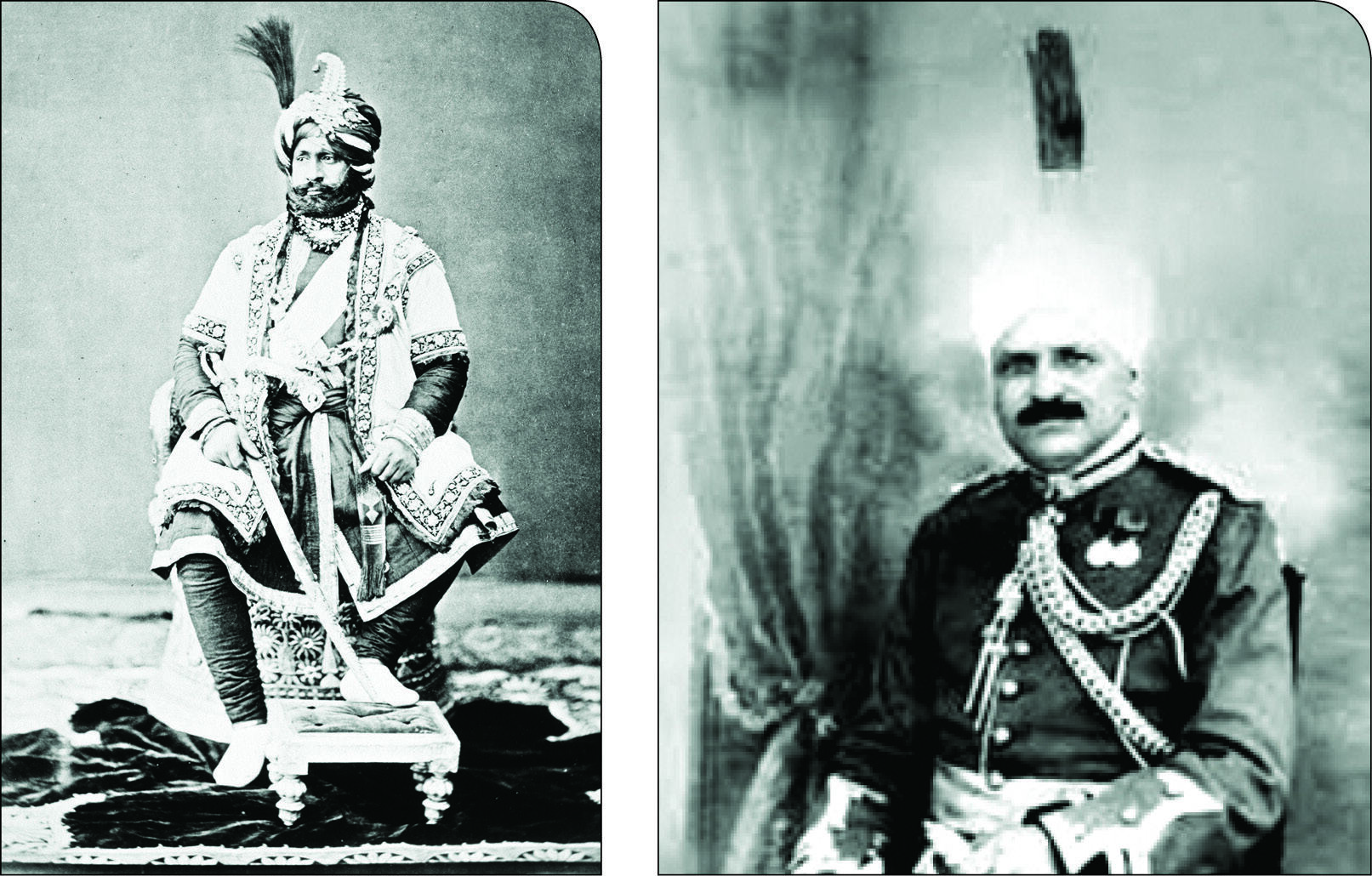Growing under dual control
Following the Treaty of Chushul, the Dogra rule in Ladakh and Gilgit came under European influence but trade continued to prosper, with Leh emerging as the main hub of commercial interaction between India and Central Asia

During the one-century Dogra rule, Ladakh was administered as a wazarat (province) with a governor termed wazir-e-wazarat to look after the day-to-day administration of the province which also included Gilgit and Baltistan. The three important centres for trade, commerce and government affairs were Skardu, Kargil and Ladakh. As trade was an important source of revenue, the Dogras kept the old mercantile aristocracy intact and gave them new titles and responsibilities. Prominent among them were the Kalon family of Changspa, Srangar of Leh and the Radhu family of Leh, also known as Khwajagon. Between 1875 and 1885, the Dogras invested heavily in the development of a cantonment, administrative headquarters, and a commercial centre at Ranbirgarh. Sikhs from Punjab and Dogras from Jammu were also encouraged to migrate to Skardu in order to set up commercial enterprises during this period. Skardu also served as the winter capital of the wazarat. In fact, commercial transactions increased on every parameter: of volume, value, and range of commodities. The Silk route was flourishing, and a contemporary British chronicler called 'Ladakh the Suez Canal of Central Asia and Leh the Port Said'.
After the Amritsar and Lahore treaties of Gulab Singh with the British in 1846, European influence began to increase. The British now mounted pressure on him and his successor to have a British officer stationed in the frontier town of Leh, ostensibly to look after the interests of the Central Asian traders but actually to monitor the developments across the borders in Central Asia. Two decades later, in 1867, in utter disregard of the wishes of the then ruler, Maharaja Ranbir Singh, the British Indian government took a unilateral decision to appoint Dr Cayley as their Agent at Ladakh, ostensibly to "maintain the tariff fixed by the Maharaja of Kashmir in 1864" but actually to enquire "into the state of trade between India and Central Asia besides sifting political information on events in Chinese Turkestan, and the Russian interests in the adjacent Khanates of Kokand and Eastern Turkestan." By April 1870, Leh was brought under the direct supervision of the British government in India. It bound the Kashmir ruler to treat the Srinagar-Leh-Yarkand trade route as a free highway in perpetuity and at all times for all travellers and traders. Two Joint Commissioners, one each representing the Kashmir Durbar and the British Government, were appointed for supervising the trade route and settlement of disputes. With Leh becoming the convergence point of caravan routes, it became the main hub of trade and commercial interaction between India and Central Asia. From the Indian side, the bulk of the trade passed through the Srinagar-Leh route. To the east of Ladakh, a caravan trail passed through Gartok towards Lhasa – the capital of Tibet. In the north, Ladakh stood connected with the Silk Route at Yarkand by a caravan route running across the Karakoram Pass.
Notwithstanding its physical difficulties, the Srinagar-Leh-Yarkand route was the most important and long-established thoroughfare between India and Central Asia. Even though the British authorities took numerous steps to improve the Kullu-Leh route with a view to encourage direct trade between British India and Central Asia, traders continued to use the Srinagar-Leh route as it was "the easiest and best supplied as to grass, provisions, etc., and thoroughly open for two or three months longer than the Kullu route." It was through this route that the Kashmir shawl industry received its supplies of pashm wool that was imported into Ladakh from Tibet and Yarkand.
After consolidating their hold over Ladakh, Gilgit was next on the British horizon. Fearing a possible Russian invasion from Central Asia, the British directly intervened and created the 'Gilgit Agency' in order to bring the area under their control. It started with the appointment of an officer on Special Duty in Gilgit in 1877, and the position was upgraded to that of a permanent Political Agent in 1889. This marked the beginning of a dual British-Dogra control in Gilgit. Civil administration remained with Dogra rulers, while military and security matters were placed directly under the control of the British Indian government. The main aim of the British Indian Empire was to protect its northern border. A local paramilitary force — the Gilgit Scouts — trained, equipped, and led by the British was raised in 1913, on behalf of the princely state of Jammu and Kashmir, to police the northern frontier of India
In 1935, the British took over the administration of Gilgit Agency from the Dogra ruler under a 60-year lease. However, the Baltistan region remained under the direct rule of the Dogras. Two weeks before the independence of India and Pakistan, the British abruptly cancelled the lease. On July 30, 1947, the British commander-in-chief of the Kashmir army, Major Gen Scott, arrived in Gilgit. He was accompanied by Brigadier Ghansara Singh who had been sent to Gilgit by the Maharaja of Kashmir as a governor. The British offered the state of Jammu and Kashmir to take over Gilgit, as per the lease deed. On August 1, Brig Ghansara Singh took charge of the Gilgit Agency from the British Political Agent, Col Roger Bacon. The Union Jack was removed, and the region fell under the control of the Maharaja.
Views expressed are personal



